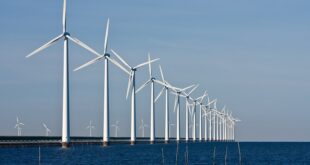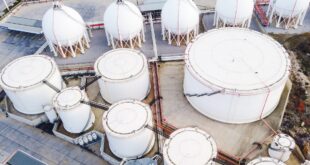U.S. steel prices continue to rise amid ongoing price hikes from domestic steelmakers. The ascent for HRC prices accelerated throughout January as they jumped by over 10%. Meanwhile, plate prices returned sideways with a modest month-over-month rise of just under 2%. Of course, this came after prices traded down throughout December.
Overall, the Raw Steels Monthly Metals Index (MMI) rose by 5.55% from January to February.
More Price Hikes for Flat-Rolled Steel
As U.S. steel prices remain bullish, steelmakers appear eager to continue the upside momentum. On February 2, Cleveland Cliffs raised spot prices for flat products including HRC, CRC, and HDG by $50/st. The move brought its minimum base price for hot rolled steel to $850/st. This represents an almost 33% increase from where prices sat before the November price hikes ($640/st).
Cliffs was not alone in raising prices. By February 3, NLMK USA followed with its own $50/st increase. This brought its minimum price for hot rolled coil to $875/st. ArcelorMittal USA and Nucor also raised their flat-rolled steel prices by $50/st.
By Feb. 13, both Nucor and Cliffs raised prices once again. Both steelmakers announced additional $50/st increases to bring their price minimums for HRC to $900/st. This marks the fifth hike for both Nucor and Cliffs since November.
Market Participants Skeptical of Uptrend
Reports indicate that service centers are tentative about rising steel prices amid the flurry of announcements. Indeed, most market participants do not expect the uptrend to continue beyond Q1, as rate hikes continue to pressure the U.S. economy.
Also, mill lead times have seen a moderate increase since the start of the year. This may suggest that supply has tightened. However, it could also be the result of buyers taking forward positions to optimize pricing amid the trend inversion. This would discount any real shift in market dynamics or rebound in demand.
Meanwhile, the spread between HRC and U.S. Midwest HRC 3-month future prices has also begun to decline. That said, future prices still remain at a premium. Typically, HRC prices sit at an average of $20/st over future prices. However, future prices are currently around $50 higher. Moreover, the two prices hold a nearly 94% correlation. Therefore, this likely indicates that, while HRC prices may continue to rise in the short term, further upside potential is likely narrowing. Indeed, buyers and service centers appear wary of building an overpriced inventory should demand begin to drop off.
European Steel Capacity Begins to Rise After Cuts
European steel output saw substantial declines throughout last year. This managed to add support to prices despite demand weakness. Most recently, Liberty Steel U.K. idled three mills, including Liberty Steel Newport and a hot-rolled mill in Wales. In total, crude steel output in the E.U. fell 10.1% year over year in November. According to the World Steel Association, output from non-member European nations fell 11.2%. This pushed European steel prices above U.S. prices. Interestingly, the shift happened despite the average $124/st premium U.S. HRC prices historically hold over their European counterparts.
Meanwhile, rising prices, low inventories, and improved demand has triggered some steelmakers to increase production. In early January, U.S. Steel Kosice in Slovakia restarted a blast furnace idled back in September. ArcelorMittal, which saw a 20% cut to its total European blast furnace capacity during Q4, also began to bring capacity back online. This included the return of blast furnaces in Poland, France, and Spain. ArcelorMittal saw a 16.6% year-over-year decline in Q4 sales, but expects apparent demand to see a modest rise in 2023. CFO Genuino Christino noted in a post-earnings conference call that the company is “seeing demand recovering especially because we don’t see a repeat of the very significant level of destock that we saw in Q4, which was something very significant.” That said, roughly 10% of the company’s capacity has yet to resume production.
 Iran Energy News Oil, Gas, Petrochemical and Energy Field Specialized Channel
Iran Energy News Oil, Gas, Petrochemical and Energy Field Specialized Channel




